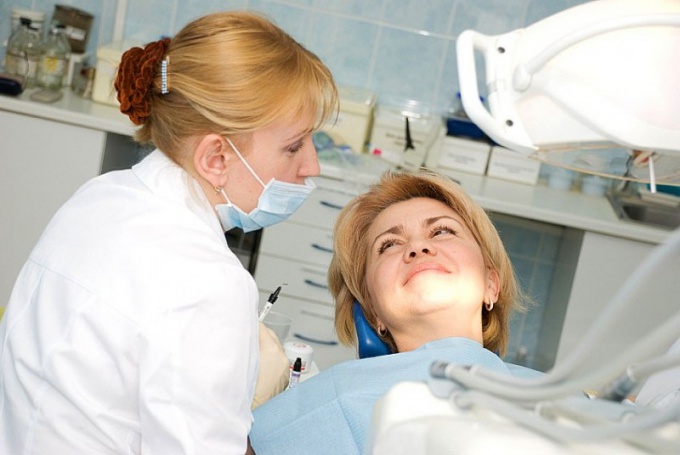You will need
- - solution of potassium permanganate;
- hydrogen peroxide;
- - soda-salt solution;
- - solution furatsilina;
- - drop the "dent";
- - a solution of chlorhexidine bigluconate.
Instruction
1
If you have even the slightest toothache should immediately contact your dentist. Today quite hour clinics with special programs for the dental treatment of pregnant women. So in any case you will help to relieve the pain and fix the problem. Even better to prevent it, contact the dentist before any pain. This is best done in the second trimester, from 13 to 24 weeks of pregnancy.
2
Doctor in any case will seal the tooth and expand a cavity. So, you will need anesthesia. Today, there are modern equipment (laser, etc.), which you can use to treat the teethwithout causing pain. If you for some reason are unable to contact the clinic where the use of these technologies, dentists will offer the usual local anesthesia. However, the use of conventional anesthetics cannot be applied, will not penetrate the placenta and therefore does not affect the fetus. The main thing – to put dentist aware of your position if it has not yet become visible.
3
However, a visit is not always possible immediately at the moment when there is a toothache. Therefore, in some cases may require the use of temporary measures to address it – until then, until you see your dentist. If you know what the toothache, gently clean the carious cavity from food residues with a toothpick. Then shape of cotton ball of the appropriate size, soak it drops "dent" and tweezers, put it in the hole.
4
Constantly rinse your mouth with warm soda-salt solution by adding in a Cup of water and half a teaspoon of salt and baking soda. You can also apply furatsilin (3-4 tablets in a glass of water) or potassium permanganate (3-4 crystal for the same amount of liquid). Suitable for rinsing hydrogen peroxide (3 percent solution) and a solution of chlorhexidine digluconate (it is sold in pharmacies). All of these products disinfect and reduce inflammation.
